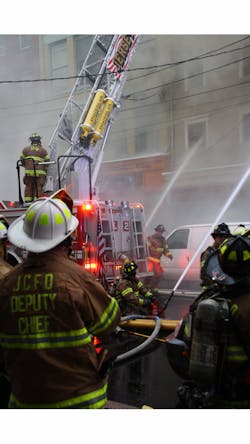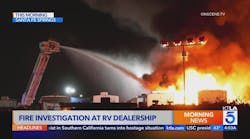Have you ever heard somebody be congratulated on a new promotion only to respond, “I’m not sure if it’s congratulations or condolences”?
The fact is, very few of us are ever promoted into a position that we didn’t want or ask for. After all, how many folks have been promoted “against their will”? In most cases, we spend considerable time, energy and resources in professional development to achieve a higher standard both in performance and position. In doing so, we are presented with the honored position of leadership and bestowed with assorted powers that can move a team or group forward.
So the question we ask is why do some feel that leadership is a burden and not a privilege? Could it be that they simply don’t understand the true meaning of leadership and confuse their roles as managers as the burden? Let’s dig a little deeper to explore this situation.
History provides us a foundation from where many of our values and beliefs are developed. Those experiences often guide us in our actions and how we respond in situations. With that, we can identify individuals historically (and even in modern times) who have demonstrated tremendous leadership while facing insurmountable circumstances and situations. During the darkest of times and when seemingly all hope is lost, a leader emerges. Before we identify some of these leaders and historical situations, let’s look at how leadership is often defined.
When asked “What is leadership?” individuals often quote one of the many definitions offered by various authors or they offer a list of common traits found in great leaders. It is also important to be able to differentiate among the concepts of leadership, followership, management and supervision. However, leadership has often been defined as the ability to motivate or influence others to work/move toward a common goal. Likewise, most describe leadership in terms of identifiable traits an individual may possess, such as visionary, accountable, honest, compassionate, a good communicator, fair and works well with others. In comparison, these terms can also apply to the roles of managers and supervisors.
In order for an organization to function effectively, both leadership and management are necessary. Sound management skills are required to maintain organizational structure and conduct everyday business operations. However, there is a distinct difference between managers and leaders. Managers are more functional, whereas leaders are more personal. It can be easily compared that both managers and leaders have the functions of directing and guiding. The difference of guiding and directing between managers and leaders arises in that managers accomplish this through enforcing procedures and delegation of tasks, while leaders accomplish it through motivation and inspiration. But nobody defines leadership as easy.
Leadership is often difficult and involves critical as well as tough decision-making skills. The fact is, being placed in a responsible leadership position is a privilege and not a detriment. Leadership is often referred to as stressful and it involves a great deal of burden, as well as pressure. However, the cornerstone of exercising effective leadership is having a clear understanding of the definition of what a leader is and how to DO leadership things and not just SAY leadership things.
For example, on July 2, 1863, Union forces were engaged in heavy fighting with the Confederate army in Gettysburg, PA. Colonel Joshua Lawrence Chamberlin of the 20th Maine was ordered to hold the Union left while occupying the rocky heights of Little Round Top. The order given to him: “Hold at all costs.” When faced with wave of attack after attack by the Rebel army, and having spread his line as thin as he could while using every round of ammunition they could find, he ordered the famous bayonet charge of sweeping down the hill, repelling the assault, thus saving the Union line and bringing an end to the day’s fighting. Chamberlin knew that as the leader, he was in charge. He took charge, and though there were doubts the bayonet charge would work, his men followed him to success. Chamberlin noted later that it was an honor to have been in the situation he and the 20th Maine were placed in.
On April 11, 1970, NASA sent three men into space for a return visit to the moon on the Apollo 13 mission. On April 13, when the crew was 200,000 miles from earth, an explosion in the oxygen tank system ended all hopes of a moon landing, with little chance of finding a way of getting the crew back to earth safely. Flight Director Gene Kranz owned the mission and never wavered in his goal of a successful outcome. Whether it was finding a way to get the spacecraft to slingshot around the moon back to earth, finding a way to build a filter with whatever resources on board the spacecraft to address the carbon dioxide issue or identifying a process of conserving battery power for all the systems that would be needed for the return sequence, Kranz demonstrated strong command presence and challenged his team to find solutions with a clear expectation that “failure is not an option.” In fact, during re-entry of Apollo 13 into the Earth’s atmosphere, many – including Kranz’s boss – thought the heat shields that were damaged would fail and the mission would be doomed. Kranz was quoted as turning to his boss and saying, “With all due respect, sir, I believe this will be our finest hour.”
In looking at these two historical events, both Chamberlin and Kranz demonstrated clear command presence, communicated their expectations, and would celebrate successful outcomes. There is a great benefit when leaders demonstrate a positive outlook about leadership, regardless of the difficulties and challenges that the situation may present. In fact, there is a great deal more to be learned from many leaders in history who faced up to the pressures, responsibilities and consequences when confronted with a critical leadership challenge, and time and time again, the leaders who succeeded more often than not were those who demonstrated that their role as a leader was indeed a privilege regardless of the situation.
What cannot be overlooked in the equation is followership. Chamberlin and Kranz were both successful in the situations they faced because there were individuals who followed. Chamberlin would have been killed or captured quickly if he had run down Little Round Top by himself with sword in hand and nobody following. Likewise, Kranz would not have had time to design a filter system to address the carbon dioxide problem and sit in the simulator to find the battery efficient sequence while at the same time watching over all the operations in motion. Both had followers that were motivated and influenced, and in all regards, gave Chamberlin and Kranz “permission to lead.” These followers trusted the leader, served the leader and their actions, behaviors and commitment made the situation successful, thus making the leader and situation successful.
John Maxwell, the noted author of many leadership books, emphasizes the importance of knowing oneself, knowing one’s followers and understanding the situation. More effective leadership decisions are made when these decisions take into account knowledge and understanding of leaders, followers and the situation. Similarly, Pat Summit, the legendary coach of the Tennessee Lady Volunteers, emphasizes that being an effective leader includes having a clear understanding of the strengths of the team and push them to live up to those strengths and making everyone on the team responsible for success.
Kranz was able to demonstrate confident and effective leadership because he first understood himself and what his responsibility was, to bring back the imperiled crew to Earth safely. He certainly understood his followers and their individual strengths. He had built a solid team that was innovative, forward thinking and empowered to solve problems. He also understood the three astronauts on board the spacecraft and what their skills and capabilities were. Finally, he understood the situation. One of Kranz’s leadership tenets was clearly communicated to everyone involved; failure was not an option. Indeed, he made everyone responsible for the success of the rescue mission.
Kranz often emphasizes the importance of teamwork as an essential element in any situation and what the difference is between the “I” and the “we” component of the team, “…because when the time comes, we need our people to step forward, take the lead, make their contribution, and then when they’re through, return to the role as a member of the team.”
There have been numerous debates about which is more important, the leader or the follower. It is our opinion they are indispensable to one another. The leader communicates the vision and the goal, but it is equally important for the follower to see the vision and believe in the goal to move forward. In fact, out of followership emerges leadership.
Think about this, followers seek confirmation of being led. It is truly up to the leader to communicate the direction and success to the group for validation and affirmation of moving toward a goal. Or is it really all up to the leader?
Often, it is the first follower who steps up and gives validation of the vision and/or mission. With that, momentum and inspiration is built by the group to follow. In reality, the first follower(s) is or are a sub-leader(s) while at the same time being a servant follower.
People don’t always need permission to step in and lead. When circumstances require it, good leaders firmly take charge and recognize that leadership is indeed a privilege, but it’s also a responsibility. One final example – on June 6, 1944, Allied forces launched an invasion of France on the coast of Normandy. As part of that invasion, on Omaha Beach, wave after wave of young men stormed the beaches only to be slaughtered by the Germans who had a solid stronghold of the heights and cliffs overlooking the beach. Arriving on the beach during the second wave was General Norman “Dutch” Cota, walking tall with a cigar in his mouth and an aura of necessary leadership confidence as he observed the carnage around him. More noticeably, he did not see any “command and control” (as we call it in the fire service) of the situation. As he found a young officer in the Army Rangers, he asked who was in charge. The response he received was that nobody knew because most commanders were killed or wounded in the initial wave. Cota took command of the situation, advised the young officer that they were going inland to fight in place of dying on the beach and that the “Rangers would lead the way.” Still today, the motto of the U.S. Army Rangers is, “Rangers, lead the way.”
According to historians, Cota exercised three important leadership actions. First, he recognized that there was no leadership and as a result, Allied troops were trapped in fear and were unable to take effective action, so he injected leadership when and where it was needed. He took charge. Second, he communicated a clearly defined plan for everyone to follow. He had to get everyone off the beach and up the cliffs. Third, he communicated the importance of overtaking the German defensive stronghold and moving inland as a critical tactic necessary to accomplish the mission of liberating France and ultimately defeating the enemy.
So what does all of this have to do with the fire service?
Have you ever arrived on an emergency scene where there was chaos? Maybe someone was in command, or maybe not, but certainly no leadership. The need then would be to insert firm and confident leadership, develop and communicate a plan and follow through by using the risk management model as a guide and seeing the incident through to a successful conclusion. We can cite numerous National Institute for Occupational Safety and Health (NIOSH) firefighter line-of-duty-death reports where lack of command structure was a contributing factor.
We serve in a profession that is both honorable and dangerous. Every year, there are many of us who will never return home from duty for an assortment of reasons. Still, there are thousands of individuals who want our jobs. Whether it’s a small town in Arizona, FDNY or District of Columbia Fire and EMS, people line up to join the fire service, career and/or volunteer. We have the privilege of serving in one of the most popular and prestigious professions. More so, some of us are promoted to leadership positions of driver/engineer all the way to chief of the department. In that case, it’s not only the privilege of leadership, it’s an honor.
Regardless of the leadership position we serve in, there are those who depend on us. While the external customer depends on quality service delivery, our internal customers rely on positive attitude, behavior and commitment. If we do not portray that it is a privilege and an honor, then why would they choose you as the one to follow?
BILLY D. HAYES is Vice President of Marketing, Outreach and Admissions for Columbia Southern University in Orange Beach, AL. Previously, he was Director of Community Affairs for the District of Columbia Fire and EMS Department and fire chief for the City of Riverdale, GA. Hayes is a graduate of Georgia Military College and the National Fire Academy’s Executive Fire Officer (EFO) Program and an adjunct instructor with the Alabama Fire College. He is a past president of the Metro Atlanta Fire Chiefs Association. RON DENNIS is Director of Training and Professional Development at Columbia Southern University. A 33-year fire service veteran, he retired as assistant chief of Avondale, AZ, Fire-Rescue after serving as a firefighter, company officer, training officer and command officer with three other departments. Dennis is a graduate of the EFO Program and has a bachelor’s degree in fire administration and master’s degree in organizational leadership. The authors offer the presentation “The Privilege of Leadership” to your organization; see www.theprivilegeofleadership.com.
Connect with Billy
Email: [email protected]
Connect with Ron
Email: [email protected]






